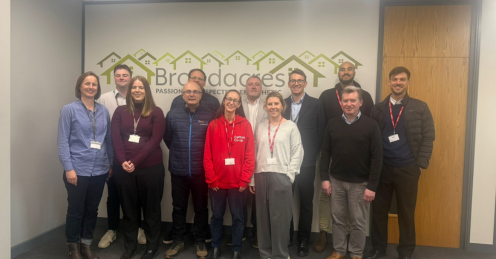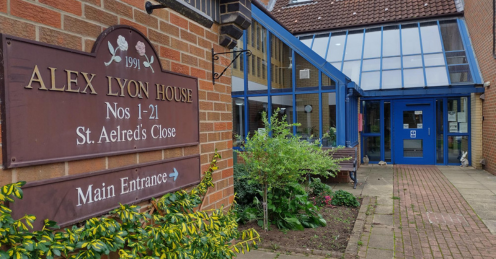The UK government’s launch of Wave 3 of the Warm Homes: Social Housing Fund (formerly the Social Housing Decarbonisation Fund) has reinvigorated low-carbon housing efforts across the country.
With applications now open (from 30th September until 25th November 2024), the fund represents a significant opportunity for social landlords to improve energy efficiency for thousands of homes.
However, whilst applying for the fund is just the first step; the real challenge is how social landlords will meet their targets…
Rothwell Plumbing Services (RPS Group) has been a leading agent and voice in this area, and in the past two years alone, we’ve successfully delivered over 3000 low-carbon retrofits, gaining invaluable insights along the way.
We’ve also partnered with Together Housing, to undertake the UK’s largest social housing heat-pump retrofit programme across Yorkshire.
Together, we learned quite a few important lessons along the way, but it means we can confidently call ourselves one of the most experienced and knowledgeable heating contractors in the industry today.
By sharing five, I’m hoping I help other housing providers be as prepared and avoid some of pitfalls in large-scale retrofitting.
- Understand the Unique Challenges of Air Source Heat Pumps
Installing an air source heat pump is a far cry from a simple gas boiler replacement. Beyond the technical differences, heat pumps often require external units, specific spacing, and insulation considerations that directly impact the resident experience.
It’s vital, therefore, that social landlords properly prepare tenants, particularly in those properties that require a more-involved installation process. This means laying the ground work, such as explaining the practical differences in operation and upkeep.
We’ve found that early engagement and clear communication are critical to helping residents understand these changes. Open discussions about how heat pumps will affect heating times, energy use, and overall comfort can go a long way in setting expectations and ensuring a smoother transition.
- Prepare for Possible Delays Due to DNO Upgrades
Installing new heat pumps will usually require the Distribution Network Operator (DNO) to upgrade for local electrical networks to handle the greater electrical capacity. Unfortunately, DNO timelines are beyond the control of contractor or landlords, and delays can disrupt planned schedules, affecting both resident engagement and installation timelines.
The best way to manage this is by building flexibility into project plans and proactively communicating with DNOs to understand any potential bottlenecks. Setting realistic timelines and advising residents of possible delays can help keep projects on track without compromising trust.
- Choose Your Retrofitting Approach Carefully
The decision to retrofit a cluster of homes in the same area or take a scattered or ‘pepper-pot’ approach brings different challenges.
Retrofitting entire streets can spark collective resistance through word-of-mouth scaremongering and social media, as neighbours may share misinformation about the process.
On the other hand, the pepper-pot approach, where retrofits are dispersed across a wider area, introduces logistical complexities and can make resource management trickier to handle.
In our experience, retrofitting homes in geographical clusters will require a concerted awareness campaign to tackle and dispel common misconceptions early and thought, and keep an eye on dedicated anti-retrofit social media campaigns and groups.
- Know Your Stock and Residents
Selecting which homes to retrofit should be based on more than just low EPC ratings or figures on a spreadsheet.
Consider the specific needs of each household and the structural elements of each property. For instance, homes with new carpets or flooring may require extra assurances for residents concerned about potential damage.
Similarly, properties that lack space for essential components like hot water cylinders or external units may present additional challenges.
Residents should be made aware of this and supported to help mitigate these costs should be considered.
Offering guarantees to restore flooring or carpets to as good as or better than new can also go a long way in securing resident support.
Identifying properties that have the necessary space for heat pump installations is a simple but often overlooked consideration. A thoughtful selection process will help avoid unnecessary disruptions and improve overall satisfaction.
- Select an Experienced Contractor Who Delivers at Scale
Installing low-carbon solutions at scale is increasingly specialised and demands experience, knowledge and flexibility.
Opting for the cheapest contractor could compromise quality and reliability in the long run. A knowledgeable installer, ideally one with a network of heat pump suppliers, will not only offer technical expertise but also valuable guidance as social landlords adapt to new requirements.
RPS Group has supported numerous large-scale retrofits, and our housing clients have come to rely on us for dependable installations and for helping them develop their teams’ capacity to handle low-carbon projects.
Many of our installers have 15+ years’ experience, which can have a big impact on the overall success of a project. For large-scale retrofits, trust and expertise are as important as cost-efficiency.
The Clock Is Ticking
With the Warm Homes: Social Housing Fund application deadline fast approaching, the time to act is now.
Pre-project planning, robust knowledge, and effective communication with residents can make all the difference in ensuring a successful retrofit programme. Don’t let common pitfalls slow you down. For guidance tailored to your specific needs, our dedicated in-house team can help.
Please contact us at Sarah@rothwellgroup.co.uk
We’re here to help you navigate every stage of your retrofit journey, backed by years of experience and a commitment to retrofit excellence.
Let’s work together to make your next retrofit project a resounding success.





